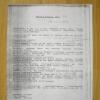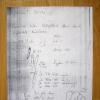
28-12-2025 12:08
Margot en Geert VullingsThis possible Karstenia was found on the bark of d

21-12-2025 21:32
Pol DebaenstHello, Garden, Burgweg 19, Veurne, BelgiumOn 10/1

26-12-2025 21:19
Arnold BüschlenPithyella chalaudii Priou. Ist als Bryoparasit in

21-12-2025 09:32
Hello.A tiny ascomycete found embedded in wood in

18-12-2025 21:17
Pol DebaenstThe identification took me to Byssonectria deformi

24-12-2025 17:08
Hulda Caroline HolteHello, I have found this propoloid ascomycete on
 Dear forum,
Dear forum,I need your help with? a fungus from the weekend on Molinia. I think it is a Mollisia. The color is white to creme, sessile, about 0,8 mm wide. The spores are (12 to 16) 14,57 x 2,92 (2,5 to 3) µm. They are hyaline, somewhat pointed at one end and round shaped on the other. Oil content is ca. 1-2. Asci 62 x 6 with croziers, iodine reaktion strongly red. Preparation in KOH blue. Paraphyses are cylindric, full with typical lightbreaking content and up to 4 µm wide, KOH-Reaktion negative.
Thank you for your help
Regards Maren

Clearly a Mollisia, according to the excipulum and paraphyses. I do not know this species but I arrive with Andreas' key at M. spec. 006. Spores 12-16 x 2-2.2 µm (dead) fit well. Andreas does not mention the apo colour, nor the KOH-reaction. Does the apical ring react directly red, or does it switch from blue to red with increasing concentration?
Zotto

thank you for your answer. The apical ring did react directly red with Baralsche Lösung. I think it could be Andreas Mollisia spec. 006.
Maybe he will tell us something about the colour of the apothecia.
Regards Maren

interesting species! I'm not sure whether it is the same as "spec. 006", which I put in the the vicinity of M. lothariana (= M. sesleriae Velen. ss. L. Krieglsteiner). I noted "Poaceae" as substrate in that time, but I'm not convinced that this must be true.
I add my notes on this collection here, which was also revised by Zotto in 1994. May be it is nevertheless of some help.
It would be interesting to sequence this species, but for that purpose I would need quite a lot of material. To have enough, at least appr. 20-30 apothecia would be needed, as they are quite small.
best regards,
Andreas

I cannot trace anything in my database and notes about your collection. very strange. How did I inform you, with a revision label? And did I comment anything on the substrate?
Apos -2 mm is quite large. Spore size and the higher oil content do not really fit to our species. When did you study this collection, shortly after 3.6.93, or only in 95? Were the spores dead when you studied them?
Zotto

am 03.03.1994 schriebst Du in einem Brief unter anderem, dass Dich die Art interessieren würde, weil Du bist dato kein einzellsporige rotreagierende Mollisia kennen würdest. Also muss ich Dir das Ding irgendwann um diese Zeit zugeschickt haben. Und zwar mit einer Kopie meiner Beschreibung und einer Kopie meiner Skizzen, denn Du hast mir diese mit Deinen direkt dort drauf gemalten und geschriebenen Anmerkungen zurückgeschickt. Du hast vermerkt "unters. 8.9.94, alles tot".
Zum Substrat gab ich ürsprünglich an "Juncus cf. effusus", Deine Anmerkung war "nein, ev. Dicotyl? nein: mit Stengelsegment von Poaceae auf Halm". Das habe ich dann übernommen.
Ich glaube, ursprünglich lief diese Art bei mir als "palustris". Beleg-Nr. bei mir 93/126.
Vielelicht findest Du da ja doch noch was in Deinen Unterlagen unter "palustris"?
beste Grüße,
Andreas

Zotto

Zotto

I've dried some stems, I think it could be about 40 apothecia. I'll send them to you next week.
Regards Maren
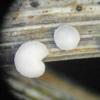
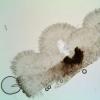
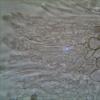

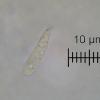
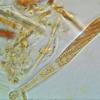
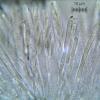
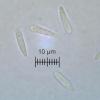
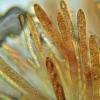
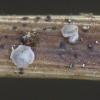
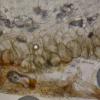
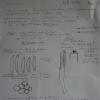
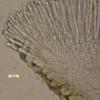
 Mollisia cf. lothariana
Mollisia cf. lothariana